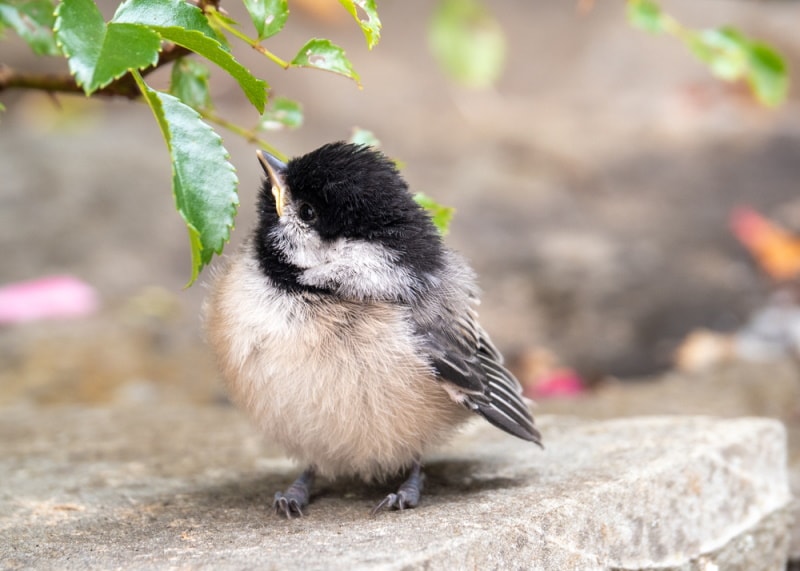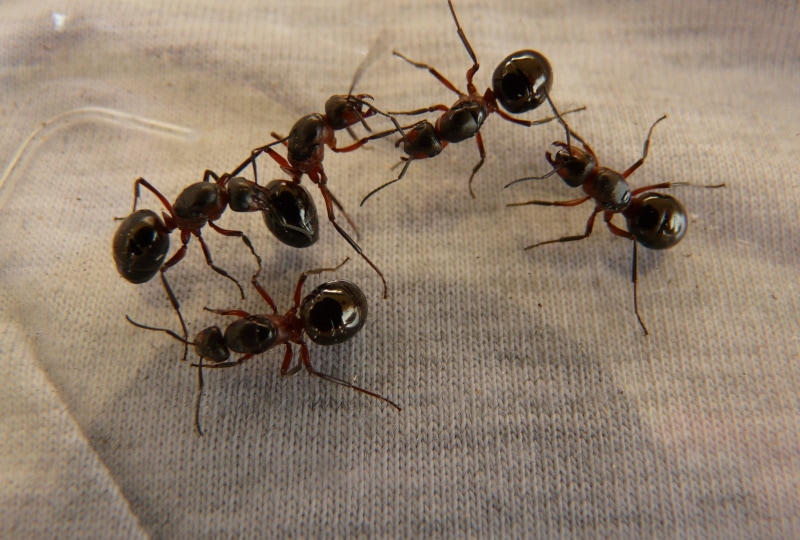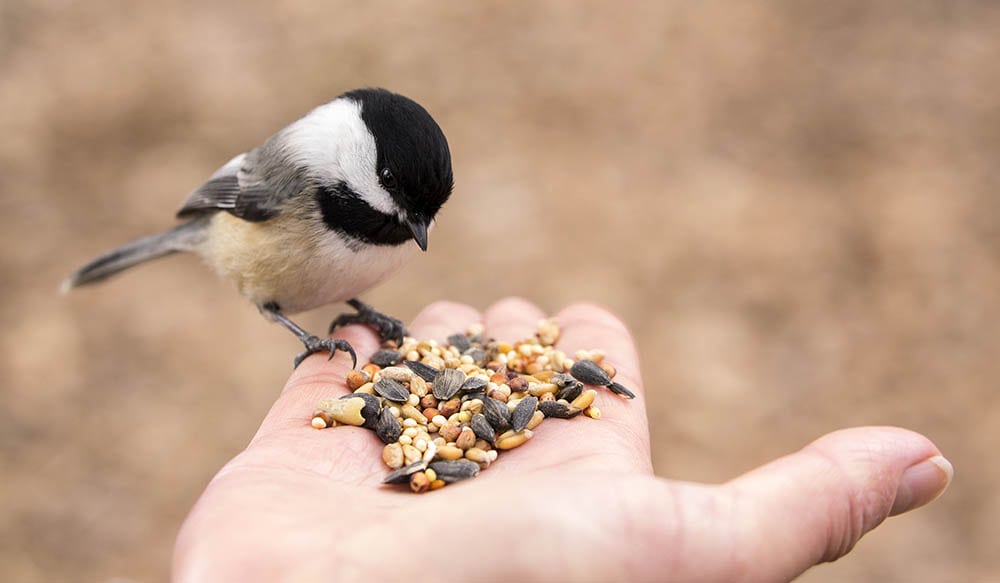What Do Baby Chickadees Eat? 3 Common Foods
Last Updated on

Chickadees are adorable tiny birds that expertly flit and maneuver through tree branches, searching for insects and bugs. If you’re lucky enough to have them nest in your backyard, they’re sure to provide you with hours of entertainment as they dart back and forth from their nest, delivering a seemingly endless supply of food to their young.
And there’s a reason it seems endless! In fact, a single breeding pair of chickadees must find 6,000 to 9,000 caterpillars, in addition to other foods, for just one clutch of around 5 babies!1
If you’re wondering what other foods can feed baby chickadees’ insatiable appetites, you’ve come to the right place. We’ve made a list of 3 common foods for baby chickadees, and included tips on how you can attract them to your backyard!

Top 3 Common Foods That Baby Chickadees Eat:
1. Caterpillars
As mentioned above, a baby chickadee’s diet consists mainly of caterpillars. That’s because caterpillars are usually aplenty around the same time chickadees hatch, and so they’re easy to find and catch for the breeding pair, not to mention nutritious. According to Doug Tallamy, professor of entomology and wildlife ecology, a clutch of fledglings consumes about 350 to 570 caterpillars per day!
Breeding chickadees will always look to build their nest where they are likely to have a good food source for their hatchlings and fledglings. You’ll often find them nesting near native trees such as oak, native cherries, birch, willow, and hickory—trees that are most likely to support large quantities of caterpillars.

2. Spiders
Spiders and arachnids in general provide chickadees with plenty of protein and vitamins. While the idea of popping a wriggling spider in our mouths might be stomach-churning, they’re a great way to supplement the baby chickadee’s caterpillar diet!
Aside from a good amount of protein, spiders also contain taurine, a nutrient that influences the learning and memory capabilities of baby birds. Research shows that baby birds who were fed a taurine-rich diet whilst they were developing, grew into adult birds with superior learning and memory skills to their counterparts who hadn’t.

3. Other Insects and Bugs
Although caterpillars and spiders are the easiest and most nutritious catch that parent chickadees can feed their young, these cute birds will eat just about any insect and bug they can get their beaks on, including ants, larvae, and moths.
Baby chickadees need lots of fat and protein to get them up on their feet and out of the nest in about a fortnight, and insects and bugs have more protein in them than beef. Besides, who doesn’t like a little variation when it comes to dinner time?


Do Baby Chickadees Eat Fruit, Seeds, and Nuts?
If you’ve been watching parent chickadees flying to bird feeders and fruit trees on their way to and from their nest, you may be wondering why we haven’t included fruit, seeds, and nuts in our list.
Although adult chickadees eat seeds, including sunflower seeds, safflower seeds, even grass seeds, and various fruits and nuts, they’re not likely to feed them to their young.
In most cases, when you see a parent chickadee stopping at a bird feeder, they’re probably there to feed themselves. After all, the amount of darting back and forth that they do expends an enormous amount of energy!
Chickadees May Be Caching Those Seeds
It is true that chickadees often stop at bird feeders for a snack to keep their energy levels up. But if you’ve seen them fly away with seeds, you might be questioning where they’re going with it.
Chickadees are known for their caching instincts, and their fascinating spatial memory capabilities. These birds will store food away, often in the fall, in over a hundred different locations!
You might wonder how a tiny bird can remember where they’ve stashed all that food away, and the answer is pretty amazing. Research has shown that during colder months, the chickadee’s body produces more brain cells in its hippocampus, the area of the brain that helps with spatial memory.

How to Attract Chickadees
There are various things you can do to attract wild chickadees to your backyard. Here are a few tips:
- Plant native trees and shrubs
- Leave goldenrods and flowers to go to seed
- Reduce pesticides to encourage bugs into your yard
- Set up bird feeders and feeding stations
- Place a bird bath nearby
- Put up birdhouses
Make sure to place your bird feeders, feeding stations, and bird baths close to trees and shrubs that the chickadees can use for shelter if they need it. Suitable perches near the birdhouses and feeding stations will allow these skittish little birds to move around easily, making them feel safer and more likely to stay!


Conclusion
While chickadees are omnivorous, and adult chickadees will happily eat fruit, nuts, seeds, and insects, a breeding pair will feed their young a diet of caterpillars and spiders. The chickadee parents supplement this diet with other insects and bugs, which provide the hatchlings and fledglings with much-needed fat and protein.
Featured Image Credit: Susan Pszenitzki, Shutterstock
About the Author Cheryl Regan
Cheryl is a freelance content and copywriter from the United Kingdom. Her interests include hiking and amateur astronomy but focuses her writing on gardening and photography. If she isn't writing she can be found curled up with a coffee and her pet cat.
Related Articles:
10 Types of Hummingbirds in Arkansas (With Pictures)
8 Types of Hummingbirds in Nebraska (With Pictures)
5 Types of Hummingbirds in Idaho (With Pictures)
3 Types of Hummingbirds in Mississippi (With Pictures)
8 Types of Hummingbirds in Kansas (With Pictures)
5 Types of Hummingbirds in West Virginia (With Pictures)
5 Types of Hummingbirds in Ohio (With Pictures)
Where Do Nuthatches Nest? Nuthatch Nesting Habits Explained
